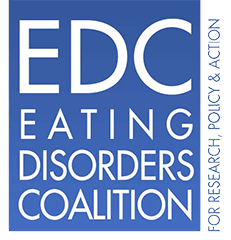
Psychiatrist and CEO, Kimberly Dennis, welcomes to SunCloud Health, Dr. Timothy Brewerton, Affiliate Professor of Psychiatry & Behavioral Sciences Medical University of South Carolina.
Interviewed by Kimberly Dennis, MD, CEDS
Featured expert on eating disorders, trauma, and co-occurring disorders.
Timothy Brewerton, MD, DLFAPA, FAED, DFAACAP, CEDS-S
Affiliate Professor of Psychiatry and Behavioral Sciences Medical University of South Carolina
Forensic Psychiatry, Child-Adolescent-Adult Psychiatry, Addiction Medicine
- You played a pivotal role in identifying the connection between trauma and eating disorders, and making co-occurring treatment standard of care. What drew your attention to this co-occurrence at a time when its role in increasing eating disorder risk and sustaining eating disorder symptoms was largely ignored? (I.e. why could you see what others could not?)
Meeting Sylvia, my first case of multiple personality disorder (MPD) (now called dissociative identity disorder (DID)), who I first evaluated in February 1988 for binge eating and depression, was the impetus for becoming deeply interested in trauma and its role in eating disorders (EDs). My work with Sylvia profoundly impacted me personally and professionally, and my experience with her led me to pursue child-adolescent psychiatry fellowship training and to investigate the role of trauma in eating disorders, which had not been studied systematically to date (see: www.sharpenminds.com/Sylvia and www.Sylviadoc.com). Once I started asking other patients in my program about trauma and symptoms of PTSD and dissociation, I discovered that traumatic experiences and subsequent PTSD and other trauma-related comorbidities were extremely common in ED populations despite there being little or no research data at the time substantiating these links.
- What did you study when you were at NIH?
I spent three years as a medical staff fellow in the Laboratory of Clinical Science at the NIMH studying the role of serotonin in EDs. My main project was performing pharmacological challenge studies in ED patients at various stages of treatment and healthy controls with serotonergic agents, including 1) l-tryptophan, the amino acid precursor of serotonin, and 2) m-chlorophenylpiperazine (m-CPP) a specific post synaptic serotonin agonist, and placebo. We measured neuroendocrine and behavioral responses to these agents as a reflection of central serotonin function, and ours were some of the first studies demonstrating impaired post-synaptic serotonin function in anorexia nervosa (AN) and bulimia nervosa (BN).
- What three publications are you most proud of in your career?
I’ve authored or co-authored a number of papers on various topics about eating and related disorders (see: ResearchGate), but if I had to choose, I would pick these three peer reviewed pubs:
- Toward A Unified Theory of Serotonin Dysregulation in Eating and Related Disorders (doi:10.1016/0306-4530(95)00001-5). This review reflects my thinking and findings during and immediately after my stint at NIMH.
- Eating Disorders, Trauma and Comorbidity: Focus on PTSD (doi: 10.1080/10640260701454311). This is one of my most highly cited papers that synthesized what was known at the time about the role of trauma and comorbidity, especially PTSD, in eating disorders and spurred further research in the field.
- Eating Disorder Patients with And Without PTSD Treated in Residential Care: Discharge And 6-Month Follow-Up Results (doi: 10.1186/s40337-023-00773-4). This is a more recent study that examined 6-month outcome results of integrated treatment in residential care of ED patients with and without PTSD.
In addition, I am very proud of the book I edited with Amy Baker Dennis entitled “Eating Disorders, Addictions, and Substance Use Disorders: Research, Clinical and Treatment Perspectives,” (doi: 10.1007/978-3-642-45378-6) which brought together experts from the EDs and addictions fields to focus on their overlapping and contrasting areas.
- What do you see as the biggest barriers to improving treatment for the 20-30% of patients with eating disorders who do not respond to current treatment approaches?
There are a number of negative prognostic risk factors including a history of childhood sexual abuse and other severe child maltreatment, the presence of PTSD/complex PTSD, a high degree of psychiatric comorbidity (especially treatment refractory depression, obsessive-compulsive disorder, and autism spectrum disorder), early onset and longer duration of illness, and disconnection or misalignment in the therapeutic relationship. Add to this a host of other factors, including misdiagnosis and poor treatment of comorbid disorders, lack of trauma focused treatment for PTSD, lack of access to health care, lack of family support, disruptions in attachment and social connectedness, and unrecognized genetic predispositions/disorders.
- What role do you see for psychedelic medicine as an emerging treatment for patients with eating disorders and trauma? What risks need to be mitigated?
Psychedelic medicine has tremendous potential for the treatment of eating disorders, PTSD, and substance use disorders, as well as other related comorbidities such as major depressive disorder, obsessive compulsive disorder, anxiety disorders, autism spectrum disorder, and personality disorders. We have entered into a “psychedelic renaissance” in terms of renewed interest and careful research to back it up. Psychedelic substances are the sacraments of ancient indigenous peoples that are extraordinarily powerful meaning-making medicines. The substances that show the greatest promise are MDMA, psilocybin and ayahuasca, which contains dimethyltryptamine (DMT), the most powerful hallucinogen known. MDMA-assisted therapy has significantly decreased ED symptoms in patients with severe PTSD in one controlled trial, and I am aware of three open studies of psilocybin-assisted therapy in anorexia nervosa that show promising results and will likely lead to controlled trials. Lastly, subjective reports of individuals with EDs have reported qualitative improvements following ayahuasca. All of these substances have powerful effects on serotonin 2a receptors, which we know are significantly dysregulated in EDs. There are certainly significant risks including psychiatric risks, such as anxiety, psychosis, and suicidality, medical risks such as adverse cardiovascular events and seizures, as well as potential boundary violations given the intense and intimate nature of psychedelic assisted therapy. These substances show great promise but have definite risks, and despite the excitement these agents show it is imperative that we progress carefully and consciously.
- Why do you think food addiction is such a polarizing topic among eating disorder professionals?
On the one hand, the polarizing reaction of professionals in the field regarding this topic amazes and perplexes me, and on the other hand I can understand it. We all have our biases, and the research-practice gap in health care is very real, averaging 17 years. The term “addiction” carries with it a lot of stigma, baggage, and misunderstanding. It wasn’t until 2013 that the American Psychiatric Association in the 5th edition of the Diagnostic and Statistical Manual of Mental Disorders began to even use the term “addiction,” which never appeared in prior editions. The term “food addiction” is somewhat unfortunate, because the science is really pointing to addiction to ultraprocessed foods as opposed to any and all foods. Nevertheless, addiction to food implies to many the need to restrict or abstain from certain foods and is equated with caloric restriction, which is anathema in the ED field. However, a harm avoidant approach to ultraprocessed foods in someone with severe binge eating and who meets criteria for food addiction is not the same thing as caloric restriction, nor does it promote diet culture. The ED field has come to terms with vegetarianism, veganism, and with eating disordered individuals with food allergies, sensitivities and intolerances, and this is not necessarily equated with caloric restriction. Nevertheless, food addiction is reflexively denounced by many because it contradicts major dogmas of ED treatment, which is that “all foods fit” and “there are no bad foods.” Neither of these statements are true for all patients all of the time. One size does not fit all.
- Tell us about your work treating patients with eating disorders and addiction? Is that patient population different in any ways than patients with eating disorders who don’t have addiction? Why did you get certified in addiction medicine?
I noticed early on in my clinical work that individuals with both an ED and an addictive disorder were more likely than not to have a significant trauma history and resultant PTSD, which is a proverbial “triple whammy.” They also tended to have other related psychiatric and medical comorbidities. Working with individuals with such multimorbidity is very difficult and challenging work, but I’ve not generally shied away from difficult cases. Also, substance use disorders have been common in my own family and in my wife’s family. In addition, my wife is an addiction expert and researcher on addiction and PTSD, and she has been a big influence on my career. When Bart Hoebel, Nicole Avena, and others began publishing their work on food addiction in animals followed by the development of the Yale Food Addiction Scale (YFAS) in 2009 by Ashley Gearhart and colleagues, I became very interested in the phenomenon. Also, in the process of writing and editing the textbook on EDs, addictions and substance use disorders with Amy Baker Dennis, I wanted to update myself on the field and pursued certification then. There are clear overlaps in the phenomenology, neurobiology and treatment of EDs and addictions, which are often underrecognized by EDs professionals.




